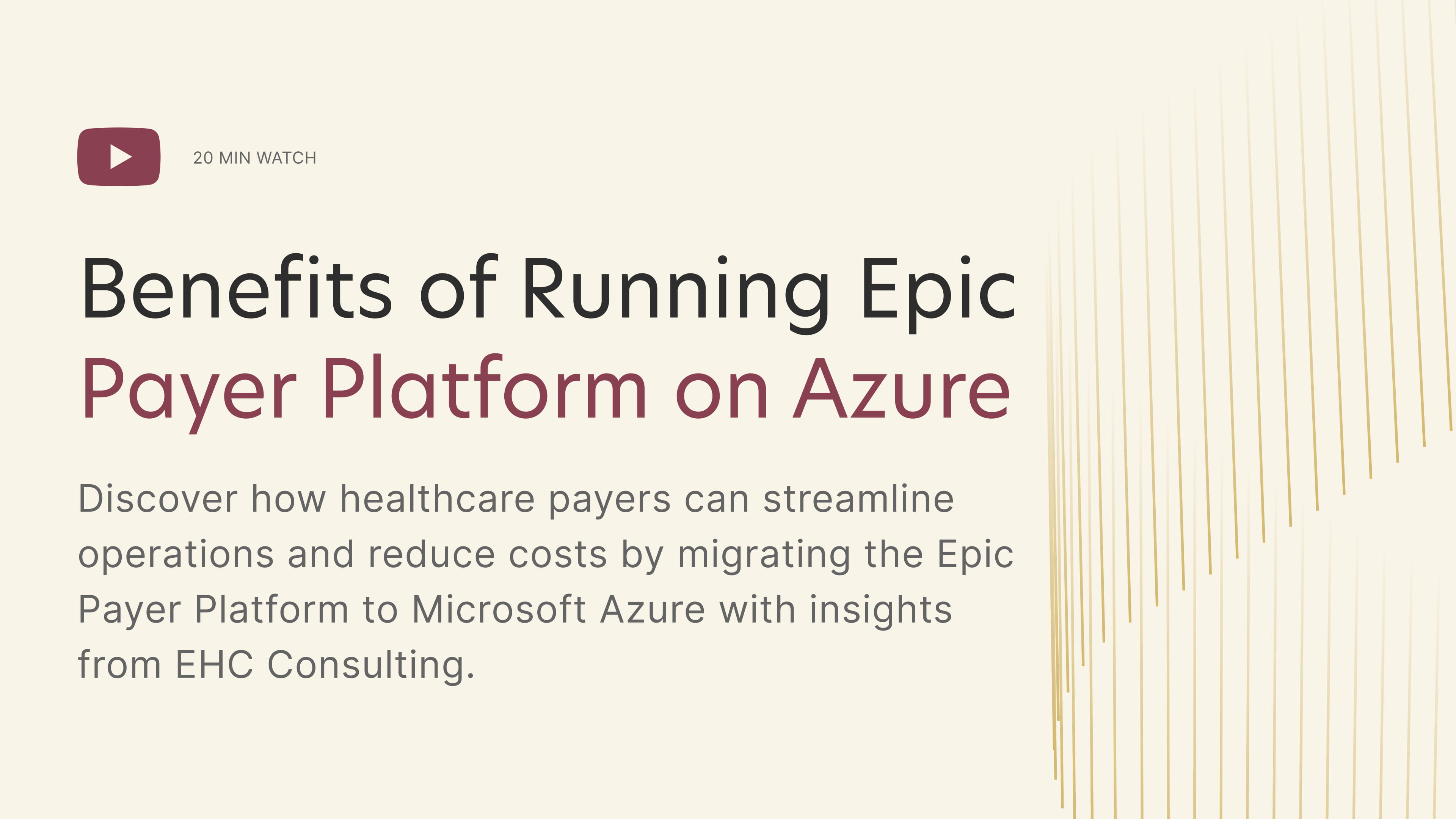
As healthcare organizations look to enhance operations and elevate patient care, migrating Epic to the cloud can offer significant advantages. This guide outlines 12 critical questions IT leaders should be asking as they consider this transformation.
1. Enhancing IT Responsiveness
Q: How has your current on-premises setup impacted your IT department’s ability to respond to business or urgent clinical needs?
Many healthcare organizations running Epic on-prem struggle with IT responsiveness due to legacy infrastructure and scalability limitations. By migrating to the cloud, IT can respond more quickly to business needs and address urgent clinical demands. Spinning up compute and storage on-demand within minutes provides the flexibility and agility that on-prem systems can’t match.
2. Scaling and Performance
Q: How have performance issues during peak times impacted your operations?
On-premises infrastructure often leads to performance bottlenecks during peak times. Migrating to the public cloud enables burst capabilities and immediate scaling of compute and storage resources, preventing resource contention and ensuring smooth performance during high-demand periods.
3. Epic Upgrade Costs
Q: How has your current on-premises setup and procurement process affected your Epic upgrade process and associated costs?
Legacy hardware and procurement processes can make Epic upgrades slow and expensive. The cloud offers greater flexibility and scalability, allowing you to quickly accommodate Epic’s growth while reducing unnecessary expenses on idle infrastructure.
4. Standardizing Infrastructure
Q: How has the lack of standardized compute infrastructure affected your cost efficiencies, operations, and performance?
Migrating to the cloud can help healthcare organizations standardize compute infrastructure, ensuring they operate on the latest processors and technology. This drives cost efficiencies and optimal performance, allowing organizations to reduce operational complexity and stay agile.
5. Improving Application Availability
Q: How have issues with application availability and performance impacted your operations?
Cloud-based solutions offer built-in data center redundancy, cross-zone and cross-region redundancy, ensuring high availability during peak periods or emergencies. This allows healthcare organizations to maintain critical operations during a disaster or peak periods without disruptions.
6. Elevating Security Posture
Q: How have security vulnerabilities in your current on-premises environment impacted patient safety and privacy?
Cloud platforms provide advanced security features, continuous monitoring, and offloaded compliance responsibilities, enhancing security and privacy protections. This helps mitigate vulnerabilities common in on-prem legacy systems, allowing your teams to focus on patient-centric initiatives.
7. Ensuring Seamless Care Delivery
Q: How have concerns about potential disruptions during cloud migration impacted your approach to digital transformation?
Seamless cloud transformation is critical for maintaining uninterrupted care delivery. By working with a partner to minimize business impacts and ensure operational continuity during migration, organizations can avoid disruption to patient care while executing their digital transformation journey.
8. Optimizing Application Landscape
Q: How have the limitations of your current legacy data centers impacted your ability to optimize your application landscape?
Cloud platforms allow healthcare organizations to leverage cutting-edge tools and technologies, transforming the application landscape and driving better performance, reduced costs, and enhanced patient care outcomes.
9. Modernizing Infrastructure
Q: How have the limitations of your current on-premises infrastructure impacted your ability to stay competitive and efficient?
Modernizing your infrastructure through cloud transformation helps healthcare organizations remain competitive and efficient, ensuring Epic environments are always running on the latest technology and leveraging advanced tools like AI and machine learning to make more informed use of patient data.
10. Enhancing Clinician Efficiency
Q: How have the complexities of your current clinical documentation process impacted clinician efficiency and what improvements do you expect from implementing generative AI transcript technology?
Generative AI transcript technology simplifies clinical documentation, reducing after-hours work for clinicians and clinician burnout. This improves note completion, decreases documentation errors, reduces clinician burnout, increases employee retention, and allows clinicians to focus more on patient care.
11. Leveraging Advanced Technologies
Q: How have the limitations of your current technology setup impacted your operational capabilities and patient care, and what improvements do you expect from integrating generative AI solutions?
Cloud platforms integrated with generative AI enhance operational capabilities, enabling faster data analysis, improved decision-making, and more innovative solutions for patient care.
12. Overcoming IT Staffing Constraints
Q: How have IT staffing constraints and limited public cloud migration experience impacted your ability to move Epic to the public cloud?
EHC’s Epic EHR migration services address IT staffing constraints by leveraging certified engineers and proven methodologies to ensure a successful migration to the public cloud, enhancing scalability, security, and patient care outcomes.
To learn more about how EHC Consulting can help your organization migrate Epic to the public cloud, schedule a consultation.

